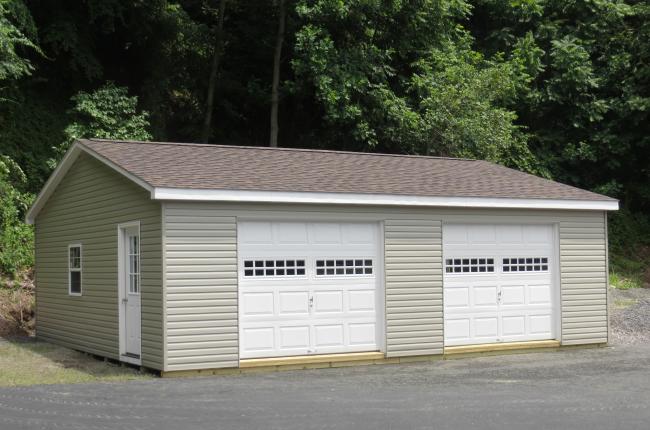
Saltbox garage is the perfect choice for homeowners who need additional storage space. This style of garage is ideal for homeowners who want to add storage space to their backyards. It has a long, sloped roof on its back and a shorter, sloped roof on its front.
Village Street Garage - This garage is in Greenwich Village. It is easily accessible and has affordable prices, making it a popular choice for New York City residents.
Home Town Garage: Whether you're a homeowner or a business owner, this garage can serve as an excellent storage solution. It's easy to find and plenty of room for your tools.
Ivywood Garage offers many shed plans suitable for backyard storage. These plans have a wood frame floor and a double door entry. These plans can be built quickly and provide a convenient way to store everything from garden tools and supplies to lawn equipment.

Greece Town Garage: Greece Town Garage is the place to go if you are an auto enthusiast who needs body work. They will ensure that your car is in perfect condition.
Tri City Garage: If you're a city dweller and are looking for a garage to store your car, the experts at Tri City Garage can help you out. They will make sure that your car is safe and secure, and they can get it fixed quickly.
This garage is ideal for both amateur and professional car mechanics. It's also a great way to save money on repairs and maintenance.
The garage is easy-to-access, offers plenty of space for your cars, is well-ventilated, with two insulated screens, a roof vent, and a Ridge vent. You will have ample access to your vehicles with its pre-hung 3' single garage door and three 9x7 raised panels garage doors.
A saltbox Garage is an American classic style of architecture. It has a loft or second story on the front and a single story on the rear. It was created in order to avoid Queen Anne's taxation of the two-story houses in England's newest colony.

These barns may be used to build one-story cabins and two-story livable houses. Typically, 75% of the building's overall footprint square footage is available for second-floor apartment, storage, and other uses.
These barns are built with a 40 pound per square foot residential floor load capacity and can be constructed to suit your needs, from a simple ladder or pull down stairs to full sets of hearty hemlock built-in stairs. For extra storage, they can be equipped with a cathedral roof or simply a loft.
FAQ
How much does it cost for a complete kitchen renovation?
If you've been thinking about starting a renovation project for your home, you may wonder how much it would cost.
The average cost of a kitchen remodel between $10,000 and $15,000. There are ways to save on your kitchen remodel while still improving the space's look and feel.
You can cut down on costs by planning ahead. This includes choosing a design style and color palette that fits your lifestyle and budget.
Another way to cut costs is to make sure that you hire an experienced contractor. An experienced tradesman is familiar with all aspects of construction and will not waste time trying to figure out the best way to accomplish a task.
It would be best to consider whether you want to replace or keep your existing appliances. The cost of replacing appliances can increase by thousands of dollars in a kitchen remodel project.
You might also consider buying used appliances over new ones. You will save money by purchasing used appliances.
You can also save money by shopping around when buying materials and fixtures. Many stores offer discounts on special occasions such as Cyber Monday and Black Friday.
Is it cheaper to remodel a bathroom or kitchen?
Remodeling a bathroom and kitchen can be costly. However, when you consider how much money you pay each month for energy bills, upgrading your home might make more sense.
You could save thousands each year by making a small upgrade. Simple improvements such as insulation of walls and ceilings can lower heating and cooling costs up to 30 percent. Even a small improvement can make a difference in comfort and increase resale.
The most important thing to keep in mind when planning for renovations is to choose products that are durable and easy to maintain. Material like porcelain tile, stainless-steel appliances, and solid wood flooring are more durable and can be repaired less often than vinyl or laminate countertops.
You may also find that replacing old fixtures with newer models can help cut utility expenses. Installing low-flow faucets or showerheads can cut water use by up to 50%. Up to 75 percent of electricity can be saved by replacing inefficient lighting fixtures with compact fluorescent bulbs.
What should you do with your cabinets?
It all depends on whether or not you plan to rent your home out. You'll need to remove the cabinets and refinish them if you plan to sell. This gives buyers the illusion of brand-new cabinets and helps them visualize their kitchens after they have moved in.
You should not put the cabinets in your rental house. Tenants often complain about having to clean up dishes and fingerprints from previous tenants.
You could also paint the cabinets to give them a fresh look. Just remember to use a high-quality primer and paint. Low-quality paints can peel off over time.
How long does it typically take to renovate a bathroom?
Remodeling a bathroom typically takes two weeks to finish. However, this varies greatly depending on the size of the project. Smaller jobs, such as adding a shower stall or installing a vanity, can be completed in a day or two. Larger jobs, like removing walls, installing tile floors and fitting plumbing fixtures, may take several days.
Three days is the best rule of thumb for any room. If you have four bathrooms, then you'd need 12 days.
What are the top expenses associated with remodeling a Kitchen?
When planning a kitchen renovation, a few major costs are involved. These include demolition, design fees, permits, materials, contractors, etc. Although these costs may seem relatively small, if you take them all together, they can quickly add up. But when you combine them, they quickly add up to be quite significant.
Demolition is likely to be the most expensive. This includes removing the old cabinets, appliances, countertops, flooring, etc. The insulation and drywall must be removed. You must then replace these items with new ones.
You will need to hire an architect for plans. To ensure your project is compliant with building codes, you will need to pay permits. The final step is to find someone to carry out the actual construction.
Finally, once the job is done, you have to pay the contractor to finish the job. You could spend anywhere from $20,000 to $50,000, depending on how large the job is. That's why it is important to get estimates from multiple contractors before hiring one.
If you plan, you can often avoid some of these costs. You may be able to negotiate better deals on materials or even skip some of the work. Knowing what is required will allow you to save both time and money.
Many people attempt to install cabinets themselves. People believe that this will save them money since they won't have to hire professionals for installation. Problem is, they often spend more time trying to place the cabinets themselves. The time it takes to complete a job can be completed by professionals in half the time.
Unfinished materials can also be a way to save money. It is important to wait until all pieces have been assembled before buying pre-finished materials, such as cabinets. By buying unfinished materials, you can start using them right away. Even if it doesn't go according to plan, you can always change your mind later.
Sometimes it is not worth the hassle. Remember: the best way to save money on any home improvement project is to plan.
What is the difference of a remodel and renovation?
Remodeling is any major transformation of a room or portion of a bedroom. A renovation is a minor alteration to a space or part of a place. Remodeling a bathroom is a major job, but adding a faucet to the sink is a minor one.
Remodeling involves replacing a complete room or a part of a entire room. A renovation involves only changing a portion of a room. For example, a kitchen remodel involves replacing counters, sinks, appliances, lighting, paint colors, and other accessories. A kitchen remodel could also include painting the walls or installing new lighting fixtures.
Statistics
- 5%Roof2 – 4%Standard Bedroom1 – 3% (rocketmortgage.com)
- 57%Low-end average cost: $26,214Additional home value: $18,927Return on investment: (rocketmortgage.com)
- $320,976Additional home value: $152,996Return on investment: 48%Mid-range average cost: $156,741Additional home value: $85,672Return on investment: (rocketmortgage.com)
- About 33 percent of people report renovating their primary bedroom to increase livability and overall function. (rocketmortgage.com)
- According to a survey of renovations in the top 50 U.S. metro cities by Houzz, people spend $15,000 on average per renovation project. (rocketmortgage.com)
External Links
How To
How to Remove Tile Grout from Floor Tiles
Tile grouting is something that most people don't even know they have. It is used for sealing the joints between tiles. There are many different types of grout today. Each has its own purpose. This article will teach you how to remove tile grout off floor tiles.
-
Before you can begin the process, ensure that you have all necessary tools. You will need a grout cutter and grout scraper.
-
Now you must clean any dirt or debris under the tile. Use the grout cutter to cut away at the grout and gently scrape away any loose pieces. It is important not to damage tiles.
-
After everything is cleaned up, use the grout scraper for any remaining grout. Step 4 can be completed if you have no grout.
-
You can now move on to the next stage after you have completed all your cleaning. Make sure to take one of the rags out and soak it in water. Make sure the rag is fully wet. You can wring the rag out if it has become wet. This will ensure that any water remains in the rag.
-
Place the wet cloth on the joint where the tile meets with the wall. The grout will begin to crumble if you press down hard on the rag. Slowly pull down on the rag until it is pulled towards you. Continue pulling it backwards and forwards until all the grout has been removed.
-
Repeat steps 4 and 5 until all the grout has been removed. Rinse your ragout. If necessary, repeat the process.
-
After you have removed all grout, rub the tiles with a damp towel. Let dry thoroughly.